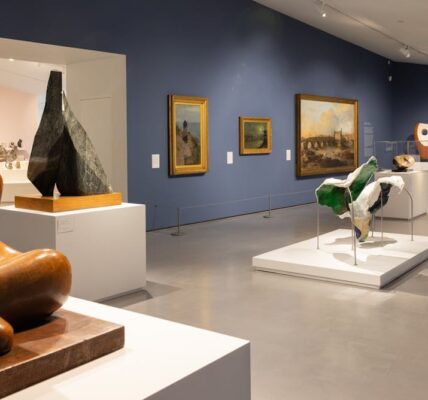There was much upset when the first statue tribute to the pioneering feminist and author Mary Wollstonecraft was unveiled at Newington Green, north London. Created by Maggi Hambling (CBE), the silvered bronze sculpture features a small naked woman emerging from the flames of sacrifice. It has solicited responses like that of The Guardian’s art critic, Rachel Cooke, who entitled her critique: Poor Mary Wollstonecraft – Reduced to a Pippa Doll with Pubic Hair.
Over 90% of London’s monuments celebrate men. This statue is one of just a few commemorating women around the capital and, for that, it should be celebrated.
But, pubic critics aside, the statue also opens up some interesting debates about public monument culture and the embrace of more abstract works that are informed by a community rather than the ideas of one artist.
Creating with communities
Public sculpture has the potential to lose its resonance quickly. Consider the representational statues of Victorian politicians in waistcoats and pocket watches. Many of these men, commemorated in cities across the UK, are largely unknown and their true-to-likeness statues have become “street furniture” with barely any public acknowledgement or recognition.
Therefore, sculptors need to “future-proof” their representations. There are more successful methods of commemorating an individual, an event or an emotional response than by reproducing them with a sense of fidelity.
Sculptors who want to depict the individuality of the likes of Wollstonecraft, Virginia Woolf (whose imminent sculpture is now a hot topic), or respond to the Black Lives Matter movement, should involve communities in the creation process. There is then the opportunity to work with collective memory – the shared memories of a community – rather than one person’s vision.
Read more:
Edward Colston statue toppled: how Bristol came to see the slave trader as a hero and philanthropist
When groups feel the urge to remove sculptures, like those of Edward Colston in Bristol or Robert Milligan in London Docklands, this is because collective ideology is changing. There is an “iconoclash”, which is where an image – in this case sculpture – is contested or destroyed based on the belief that what it represents is wrong.
Ideas about statues change as society changes. As this happens, different groups contest the meanings behind the sculptures, leading to disagreement about whether they should be kept or taken down. But while ideologies can change, causing this iconoclash, communities retain their collective memories about something, whether they are good or bad.
Representational sculptures (those that strive for realism) pin memories to the particular person depicted and their values. So, the image of Colston reminds us of his slave trading.
When statues are more figurative, their meanings become more multilayered. The sculptures become representative not of the individual but of collective memory, a feeling or moment and are then able to eschew the connection with personal values.
As David Lowenthal, historian and author of The Past Is a Foreign Country (1985), wrote:
The past is everywhere … Relics, histories, memories suffuse human experience … Whether it is celebrated or rejected, attended to or ignored, the past is omnipresent.
If the collective experience is incorporated into the creation and construction process of commemorative sculpture, then the resulting work will have an internal life of relevance to the community.
A mining community’s Dream
Jaume Plensa’s Dream(2009) in St. Helens, Merseyside is a successful example of this process. The sculpture was commissioned by the Liverpool Biennial for Contemporary Art and St. Helen’s Council in 2007 as part of the Channel 4 television participatory public art initiative, The Big Art Project.
Commemorating the industrial history of the area, Dream sits on the site of the former Sutton Manor Colliery. The project evolved with deep involvement from the miners who had worked on the coalfield, as well as schoolchildren and other community groups.
As a result of working with the community, Plensa discovered that miners carried tallies – identity discs which they held to be very significant – and that they dreamt of light when working below the surface. These key issues led to the design of a luminous white head based on a plinth referencing tallies.

Pete Stuart/Shutterstock
The ex-miners involved in the design process rejected a more literal sculpture, in the form of a miner’s lamp. The stylised dolomite stone and concrete angel aims not to represent anyone but everyone. It does not revive the past by focusing on the specifics of mining, but reflects on the collective memory, community hopes and dreams, and looks forward.
After some initial surprise and backlash, the public received the sculpture well. Former miner and member of the Dream focus group, Gary Conley, said: “We’ve got an iconic sculpture done by a world-class artist that other major towns and cities would absolutely revere.”
Similarly, Maggi Hambling aimed for universality in her tribute to Wollstonecraft. “She is Everywoman … by elevating an idea, personifying the spirit, rather than depicting the individual.” The commissioning team sought for it to be “a source of debate … a tangible way to share Wollstonecraft’s vision and ideas”.
The statue’s rejection of Wollstonecraft’s features enhances its universality. It reflects all women, their achievements and power. It is a memorial to equality and therefore a compelling monument for us all. Future acts of public commemoration could learn a thing or two from it.








